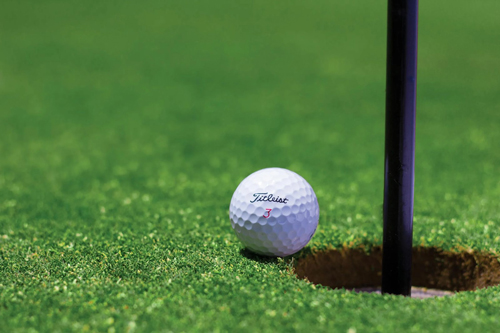It may look like golf is easier on the body than other games, but it really is hard on many parts of the body. Golfers can stay healthy and enjoy the game for many years to come if they know how to avoid injuries and use the right methods.

Proper Warm-up Routine
A thorough warm-up is important for keeping golfers from getting hurt, but many players just walk onto the course and start hitting. The body needs time to get ready for the complicated moves that golf requires. The right way to warm up is to gently stretch your back, shoulders, and arms for at least 10 to 15 minutes. Slower-paced dynamic moves that look like the golf swing help get the muscles ready for the game.
Before you start, taking a short walk helps the blood flow and makes the whole body feel better. Remember that muscles that aren't warmed up are more likely to get hurt, so taking the time to warm up right will help you play golf for longer.
Core Strength Development
The core is a very important part of the golf swing and keeps you from getting hurt. When you play golf, your spine is protected by your core, which gives you stability and strength. Doing core-strengthening exercises on a regular basis can help you keep good balance during the swing and lower your risk of back injuries. Many golfers find that doing core exercises regularly not only keeps them from getting hurt but also makes them better at the game.
Just as players might research the best online gambling sites for entertainment between rounds, they should also dedicate time to strengthening their core muscles for better golf performance.
Proper Swing Mechanics
A lot of golf accidents happen because of bad swing mechanics that put too much stress on the body. To avoid getting hurt, it's important to work with a trained instructor to learn the right techniques. Overswinging, bad weight shift, and the wrong amount of grip pressure are all common problems. The golf swing should be smooth and controlled, and the body should move together in an organised way. When you swing correctly, the force of the swing is spread out evenly across your body, not just in weak spots like your lower back or arms.
Equipment Considerations
To avoid getting hurt, it's important to use equipment that fits correctly. When players use clubs that are too long, too short, or have the wrong lie angle, they may have to make changes to their swing that hurt them. Club fittings are done on a regular basis to make sure that the player's equipment fits their body and swing style. The grip size is very important because the wrong grip size can cause problems with the hands, wrists, and elbows. Wearing the right golf shoes with good support also helps you stay stable during the swing and keeps your feet and ankles from getting hurt.
Recovery and Rest
Many golf accidents happen because of overuse, not because of a sudden accident. These chronic stress injuries can be avoided by knowing how important it is to rest and heal. Taking breaks between rounds and practice sessions helps the body heal and fix any small damage to tissues. Having days off to rest is just as important for your golf game as practicing. Light stretching and slow, gentle moving can help keep you flexible during these breaks while you let your body heal.
Physical Conditioning Beyond Golf
Keeping up your general fitness level is a big part of staying injury-free in golf. Cardio, strength training, and flexibility work should all be part of a well-rounded fitness plan. Strong muscles protect joints and help you keep the right form throughout the round, especially as you get tired in the later holes. Cardiovascular health helps golfers keep up their energy and focus, which makes it less likely that they will make mistakes in their technique that could hurt them.
Environmental Awareness and Preparation
If players aren't ready, playing in different types of weather can make them more likely to get hurt. Muscles are less flexible and more likely to get hurt when it's cold outside, and they can lose water and function when it's hot outside. Changing warm-up practices based on the weather, drinking enough water, and wearing the right clothes can help keep you from getting hurt in bad weather. Knowing how the game is set up and changing how you play can also help keep you from getting hurt from slips or bad lies.
Knowing and using these ways to avoid getting hurt on the golf course lets players enjoy the game while staying healthy. It is always better to avoid getting hurt than to try to treat it, and taking steps to avoid getting hurt will eventually lead to better performance and more enjoyment of the game. Paying regular attention to these parts of golf exercise and preparation can help you play golf for a long time and stay healthy.
Over time, doing these injury-prevention methods on a regular basis turns into habits that protect against both short-term and long-term golf injuries. Even though the game is always changing with new tools and ways to teach it, the basic rules for staying safe while playing golf are still very important for all golfers, from newbies to pros. Golfers can focus on getting better at the game and enjoying all the great things this sport has to offer by making injury prevention a top concern.

